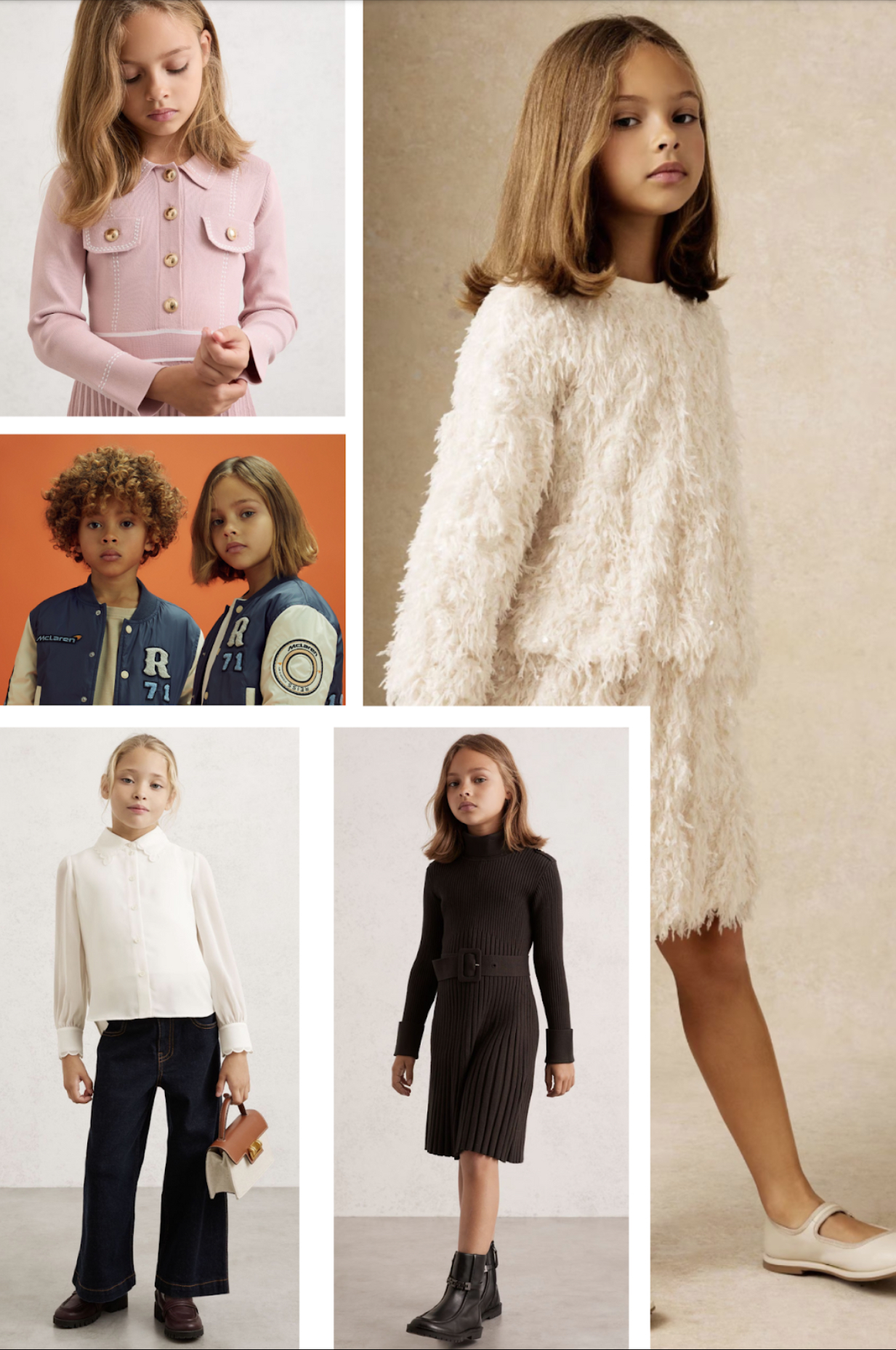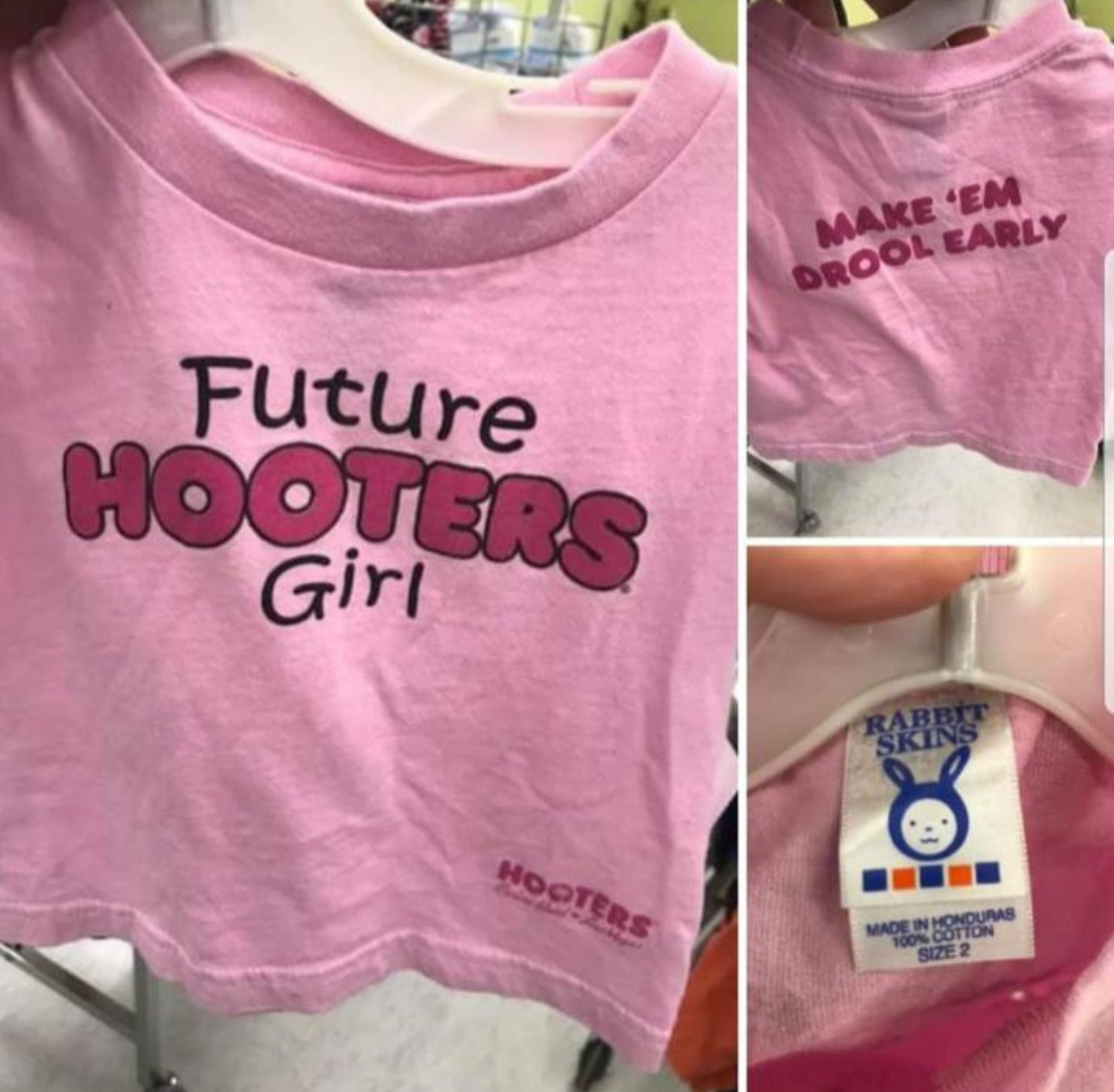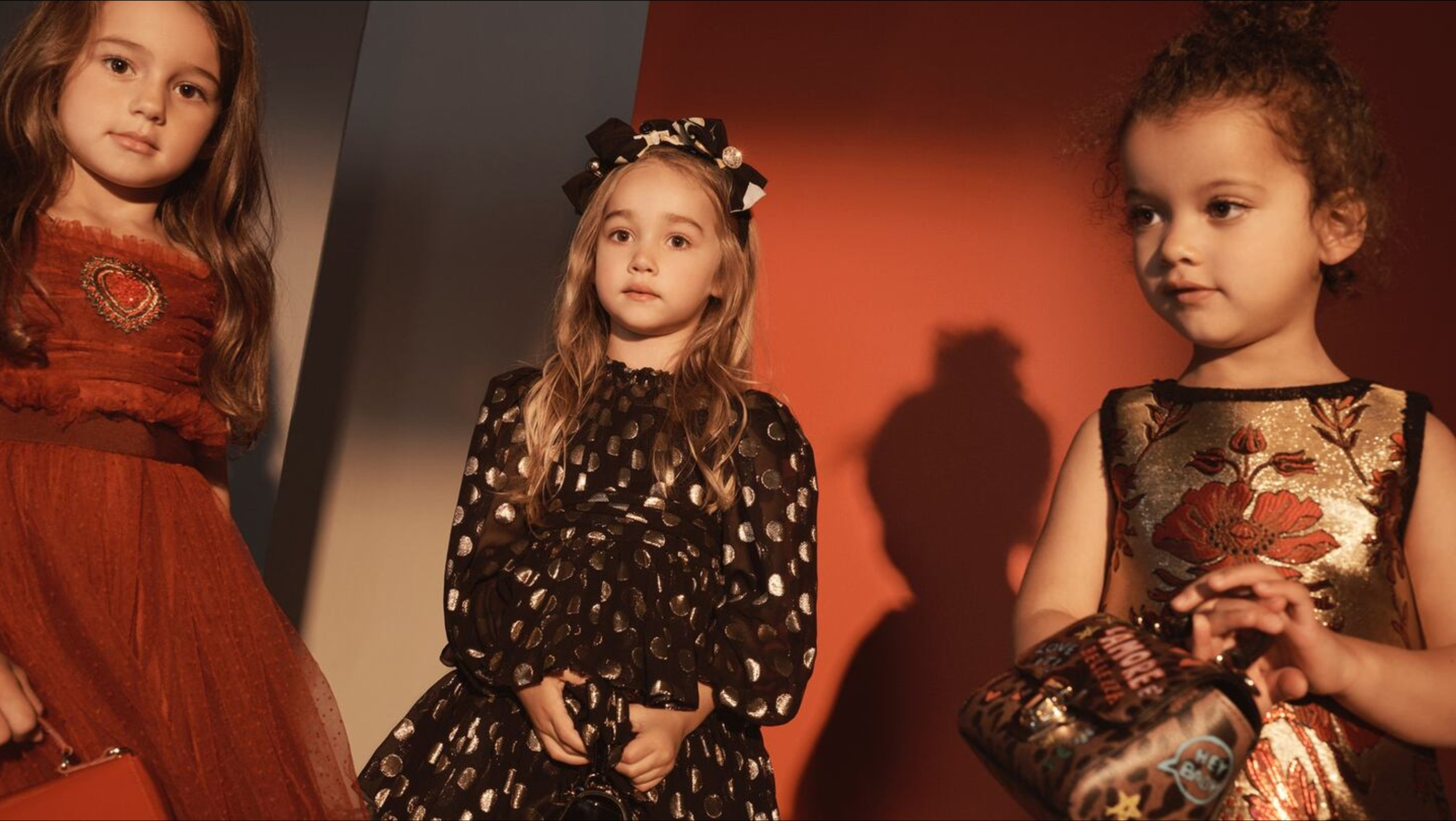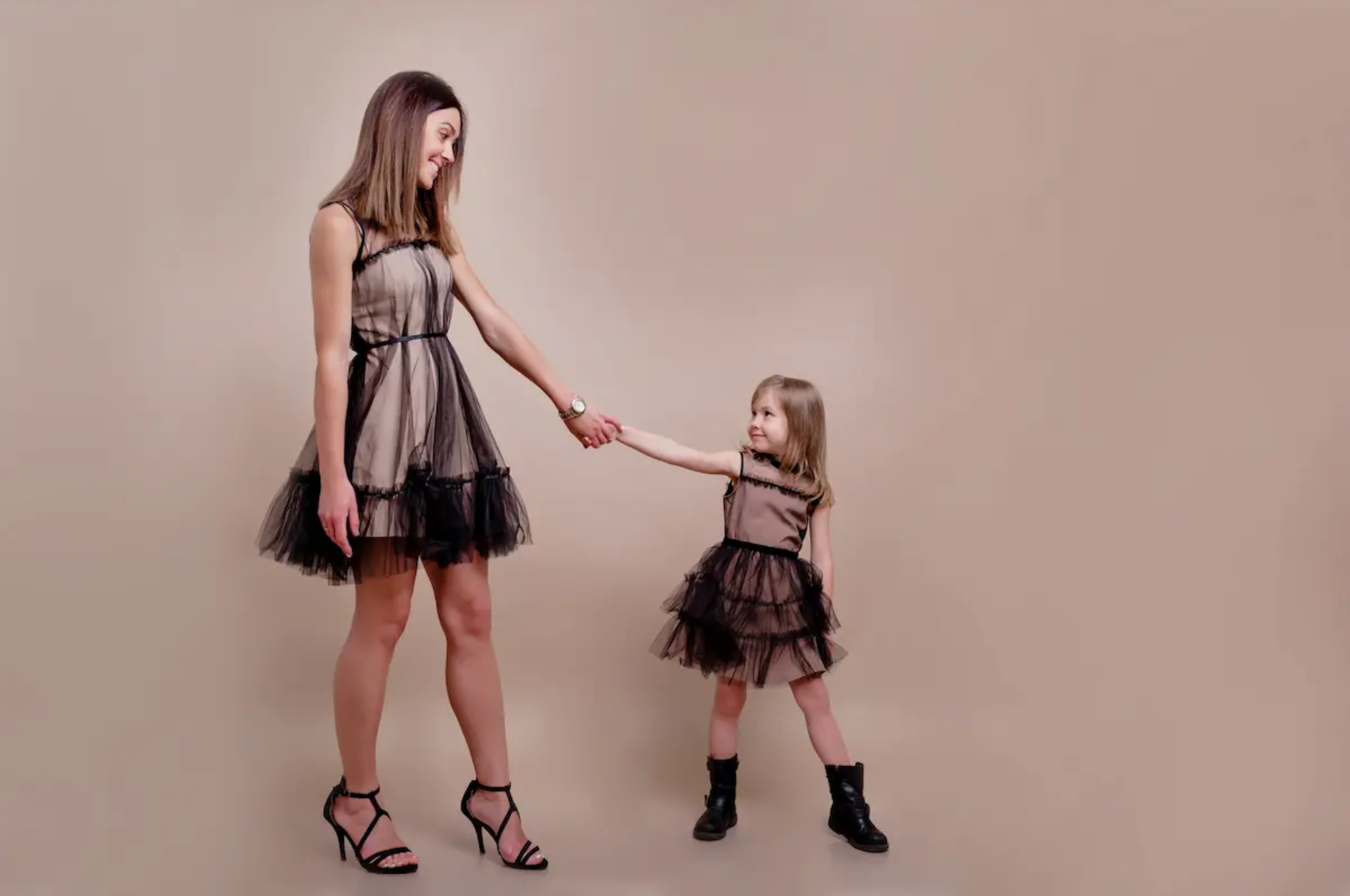The Adultification Of Children’s Fashion
Somewhere between the baby aisle and the junior section, childhood disappears. Clothes that used to be playful, covered in animal prints or stars and decked to the nines with sequins and glitters, are now miniature versions of what adults wear to clubs, offices, or influencer photoshoots. The trend is called Mini Me marketing, and it's everywhere. Matching mommy-and-me blazers, toddler jeans labelled "high rise skinny", tiny faux leather crop jackets. The concept is cute, right up until it stops being about connection and starts being about image.
Fashion has turned childhood into a brands extension. Kids aren't just dressing like their parents, they're being drafted into their parents aesthetics. The market calls it "family style". Social media calls it "adorable". But somewhere in the process, kids have stopped dressing and being dressed like kids.
Brands learned early that if adults are customers, their children too. Matching sets and micro versions of adult trends sell well because they hit two demographics at once. Parents chasing a lifestyle image, and kids who learn fast what looks “cool” and what doesn't.
Luxury houses have led the charge. Gucci, Dolce & Gabbana, and Balenciaga all release miniature versions of their main collections. Selling designer sneakers, handbags, even toddler-sized trench coats and baby beauty products priced higher than most adult wardrobes. Tiny models in couture posing like grown ups, hair gelled, expressions serious. It’s cute until you remember they’re five.
The message isn’t subtle either. It tells parents that style is inherited, that a fashionable child is proof of taste, of class. But it also tells the child that image matters. Early. By the time they hit double digits, they already know that what you wear dictates how you’re treated.
Mini-Me dressing would be harmless if it stopped at matching coats. It doesn’t. The line between “cute” and “inappropriate” in children’s clothing has gotten disturbingly thin.
Walk into any major retailer’s girls’ section and you’ll find crop tops marketed to eight-year-olds, shorts labeled “cheeky cut,” and slogan tees with a little less kid friendly than regular playground banter. Some brands call this “confidence.” Others call it “trend alignment.” Realistically, it’s just adultification with a cleaner name and better lighting.
Like usual, social media accelerates the problem. TikTok and Instagram are full of “toddler outfit hauls”. Parents dressing their kids in mini bikinis, skin tight leggings, or designer fits meant to look “grown.” These videos pull millions of views. They blur the line between childhood fun and soft core branding.
@brooke_cornell Sending back today but…. Sorry let’s let kids be kids & dress like kids.. #fyp #letkidsbekids #weird #parenting
♬ original sound - BR🫶🏻🫶🏻KE
There’s also the disturbing wave of “kiddie TikTok”. Even when children’s clothes aren’t overtly sexualised, they still carry heavy gender messaging. Boys’ T-shirts say “Future CEO,” “Trouble Maker,” or “Adventure Squad.” Girls’ T-shirts say “Born to Sparkle,” “Be Pretty,” or worse, “Too Cute for Homework." Content, posts where parents show off outfits that would be sexualised if worn by adults. The comments sections prove the point, there’s no shortage of people willing to sexualise them. Fashion doesn’t just enable that culture, it sells it.
Even when children’s clothes aren’t overtly sexualised, they still carry heavy gender messaging. Boys t-shirts say “Future CEO,” or “Trouble Maker,” or “Adventure Squad.” Meanwhile girls T-shirts say “Born to Sparkle,” or “Be Pretty,” or worse, “Too Cute for Homework.”
There’s a whole market built on these jokes, and none of them are funny. They reinforce the same gender binaries adults are still trying to unlearn: confidence for boys, compliance for girls. It starts in toddler sizes.
Parents often buy these clothes without a second thought. They’re everywhere, they're cheap, and they're normalised. But normalising those messages teaches kids who they’re supposed to be before they even know who they are.
And then there’s the innuendos. Yes, even for kids.
Every so often, a retailer releases a “quirky” children’s graphic tee that slips straight into adult suggestiveness. Printed slogans like “Lock Up Your Daughters” or “Does this diaper make my butt look big”. Going so far as to even have shirts that say "Future Hooters girl" with the print "Make 'em drool early" plastered on the back, hanging in the toddlers section. They’re meant to be jokes, but they feed the same cycle of early sexualisation and gender scripting.
It’s not just what the clothes say either, it’s what they fit. Children’s sizing has begun to echo the same warped system adults deal with, vanity sizing and arbitrary measurements that label normal bodies as “plus.”
Many preteen lines separate “regular” and “plus” for kids barely ten years old. Some stores even stock shapewear for minors. In 2011, Abercrombie Kids faced backlash for promoting a padded push-up bikini top to second grade girls, effectively reselling the early 2000s body ideals that damaged an entire generation the first time around.
The underlying message hasn’t changed. Your body is wrong unless it looks like the ones in the ads. Only now, the ads start targeting elementary schoolers.
Along side this, TikTok has become the main trend incubator for teens, and younger. Preteens now scroll the same feeds as adults, watching the same influencers flaunt luxury hauls or “get ready with me” videos. The pressure to keep up starts before they can even pay for it themselves.
Microtrends move fast too. Clean girl, coquette, balletcore, old money. None of them are meant for children, but all of them get filtered down into kid sized versions within weeks. It’s no longer “dress up”, it’s an aesthetic apprenticeship.
The most concerning part is how these aesthetics recycle older, adult themes. Fragility, sensuality, wealth. When ten year olds mimic them, it isn’t self-expression, it’s a learned performance. They’re being taught that appearance equals identity, now earlier than ever before.
Children’s fashion isn’t just about taste either. It’s about money.
Parents spend more when clothes feel aspirational. “Mini luxury” lines let them project a curated image of success. Fast fashion brands capitalise on that by churning out endless micro versions of adult designs, knowing kids will outgrow them in months.
It’s the perfect business model. Infinite turnover equals infinite guilt. Parents are sold the idea that keeping up equals good parenting. And when the child wants the next trending piece, or the next momfluencer posts her new luxury kids clothing haul, the cycle restarts. The adultification of children’s fashion isn’t an accident. It’s a market strategy dressed as cultural evolution. All while blasting children's faces all over their timeline far before the child can even conceptualise consenting to being filmed like this.
The cultural logic behind all this is that children should be “cute.” But “cute” is slippery. It's a dangerous line that tends to shift between innocent and suggestive depending on who’s looking. Fashion plays with that ambiguity constantly. Mini dresses with corset seams, slogan tops that imply romance, toddler jeans marketed as “sexy fit.”
Parents may defend it as harmless, but collectively it teaches something bigger, that appearance is a child’s primary language. That how they look is what makes them valuable. And this isn’t just puritan panic, it’s a deeply rooted design issue. It’s about intent. When brands put marketing effort into making kids look like twenty somethings, it isn’t about childhood at all. It’s about turning kids into walking billboards for adult fantasy.
Clothing has always carried identity, but childhood clothes used to protect it. Once loose shapes, bright colours, and fabric built for play. Now, “fashionable” kidswear looks stiff, restrictive, and styled for photos instead of movement. A picture is worth a thousand words but parents are forgetting that happy memories not spent obsessing over how chic a child is are worth a million pictures.
The solution isn’t banning cute outfits or making everything sad millennial beige. It’s remembering that children’s clothes should serve the child, not the culture watching them. Retailers could stop pushing gendered messaging and adult silhouettes. Parents could question whether their kid’s outfit is for the child’s comfort, or for likes on social media. Fashion loves to reinvent itself, but it keeps forgetting where to draw the line. This Mini Me marketing sells aspiration. Adultification sells control. Neither belongs in a child’s closet.
Citations & Sources
- Berezhna, V. (2024, September 26). Why mini-me dressing is big business. The Business of Fashion. www.businessoffashion.com/…
- CNN Wire Staff. (n.d.). Abercrombie criticized for selling push-up tops to little girls. CNN. www.cnn.com/…
- Chan, S. (2023, April 29). Dolce & Gabbana’s new “Thin & gorgeous” sneakers cause online outrage. The Hollywood Reporter. www.hollywoodreporter.com/…
- Cornell, B. (2025, April 2). TikTok. www.tiktok.com/@brooke_cornell/…
- Freeman, D. W. (2011, March 28). Abercrombie Bikini tops: Threat to girls’ mental health? CBS News. www.cbsnews.com/…
- Hodge, L. (2021, July 26). Mum slammed for toddler’s hooters T-shirt parents brand as “basically grooming.” Daily Record. www.dailyrecord.co.uk/…
- Lyons, B. (2025, March 13). The rise of toxic mom influencers. The Prowler. www.qohsjournalism.wordpress.com/…
- Mini-me fashion: Why parents dress like their kids (and vice versa). Palme School. (2025, August 30). www.palmeschool.com/…
- Ro, C. (2021, March 17). 15 clothes that were made for children but belong in a Dumpster. BuzzFeed. www.buzzfeed.com/…
- Wang, J. (2022, July 1). Image conscious and extravagant: China’s new-Gen Parents. Vogue Business. www.voguebusiness.com/…




